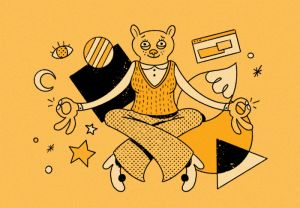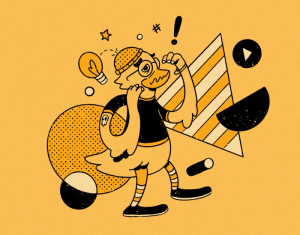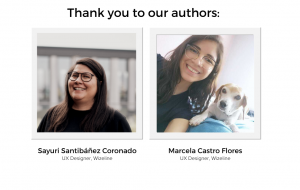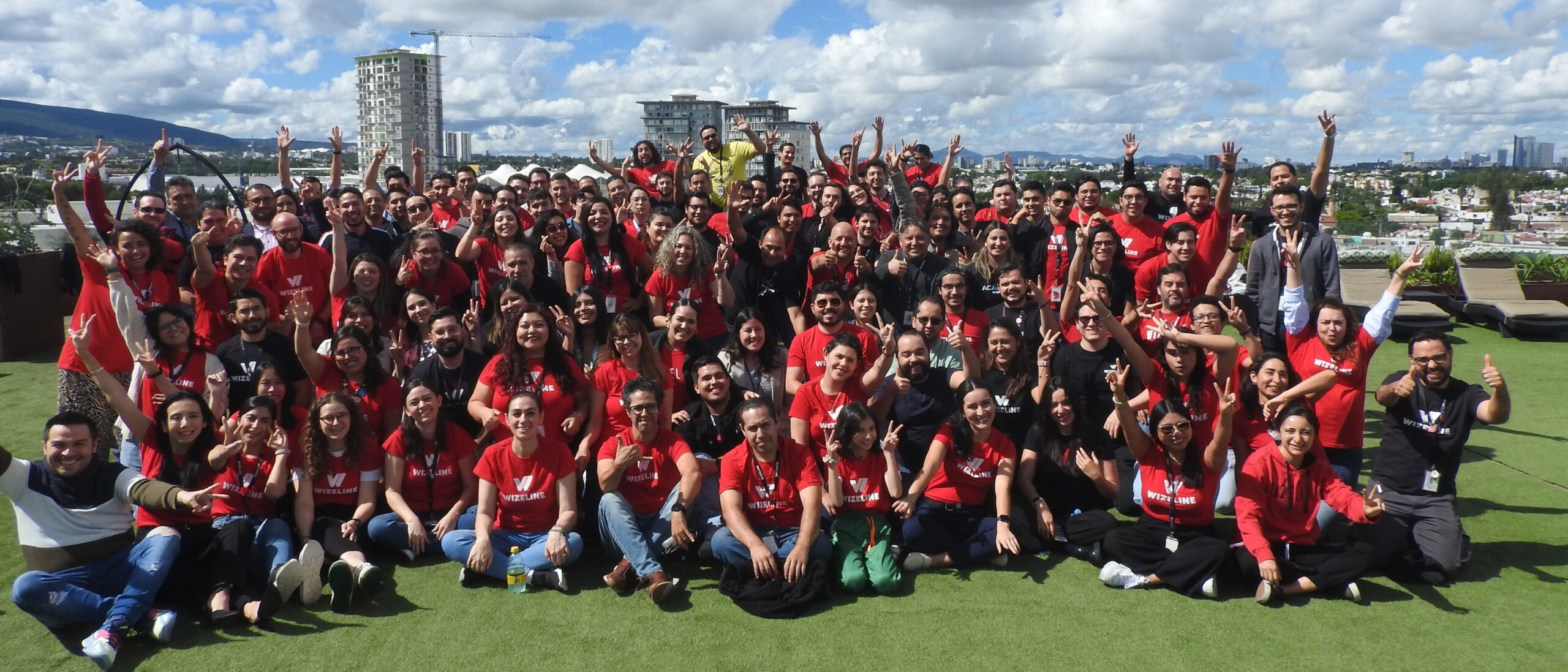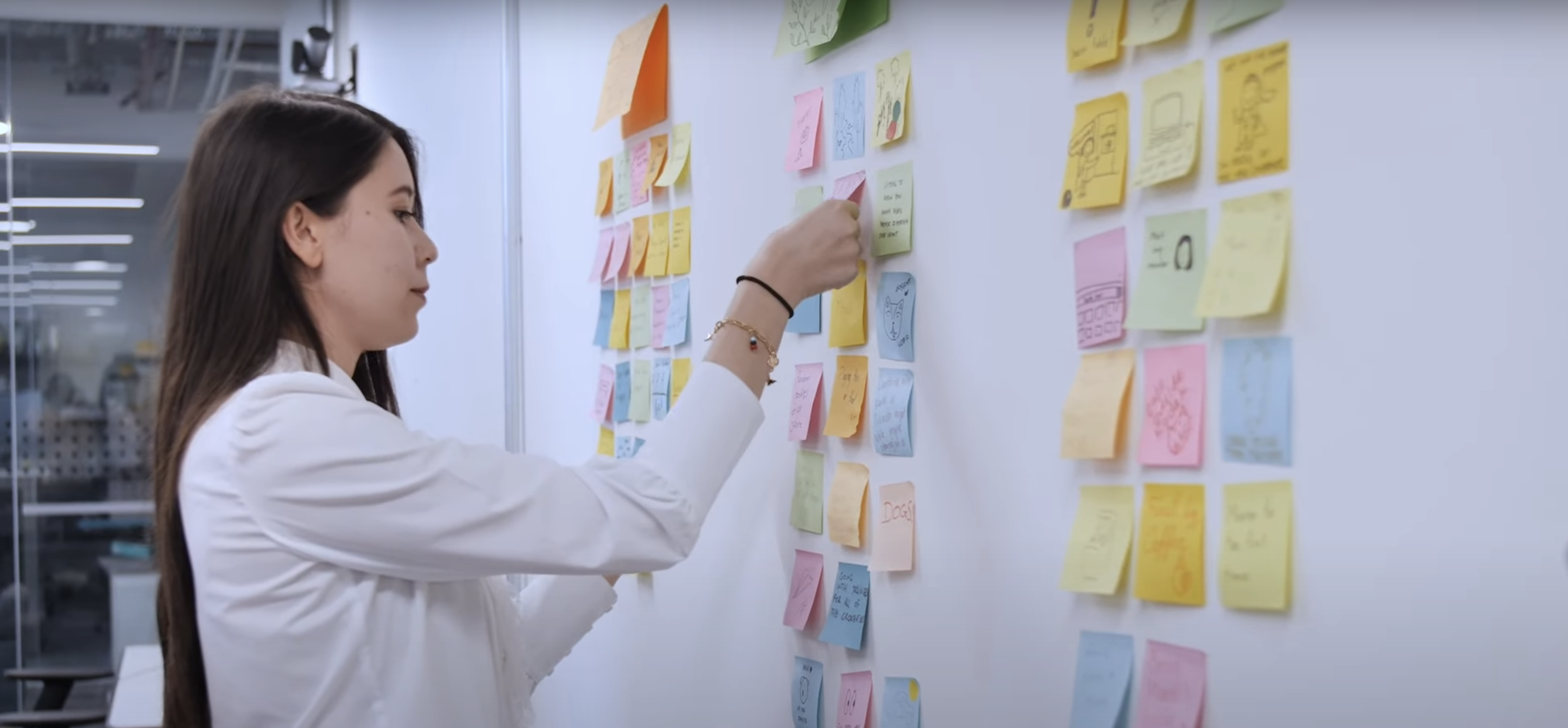When Exploring New Fields Might Be a Good Move
During college, we continually had this stressful feeling about what we were going to do once we graduated. We heard several times, “If you’re a software engineer, you should program!” and “How’s it possible that you’re studying software engineering but you’re not passionate about programming?”
By this point, you’ll start questioning yourself if you’ll ever find something suitable for you and what you like to do. We did feel a little disappointed in ourselves because we thought that maybe we made a mistake when choosing to get a college degree in software engineering. Nevertheless, it’s important to mention that everyone’s experience is different, and we must say that without ours, we wouldn’t have discovered our passion, UX design.
We started our careers as front-end developers and business analysts. We liked it a lot because we designed components, worked closely with the user’s interaction and the look of the website, and understood logically what our goal was while building a product. This is the point when we started looking for more similar tasks until we discovered that our real passion was design.
At that time we reflected on pursuing a career in that field, but we weren’t sure how.
How can we design while still being in the IT industry? We thought the options were very limited. Our perspective about design wasn’t clear on how it impacts software development and how they coexist. We assumed that design was only related to front-end development and oriented only to how to implement it through different frameworks or different languages. We assumed this until we comprehended that studying software engineering is not all about programming.
There are many different areas where you can apply all that knowledge within the IT industry. Some of those areas are quality assurance, artificial intelligence, technical writing, project management, and of course, the fantastic world between development and design, UX (user experience).
These are some of the reasons why we want to share with you our experience while taking this leap into the UX world, specifically from a software engineering career. But beyond telling our story, we’d like for you to know, if you’re considering a shift but feeling hesitant, you’re not alone. You just need to be brave enough to stop paying attention to what other people might say and trust what you’re passionate about to reach your true happiness.
Design and Software Development: The Best of Both Worlds
The advantages of becoming a UX designer with a software engineering background are that you’ll start thinking about your proposals with your developer side. You’ll think more deeply about whether your proposals are feasible or not and their complexity level. From our personal experience, we feel very comfortable when having technical discussions because we speak the same language as they do. Additionally, we can contribute with some tricks and some front-end development tasks.
Since there are way too many skills and tasks you can combine to get the best out of both worlds, in this article, you can find some advantages we have encountered along the way in our UX careers:
Close Collaboration Benefits Everyone
We feel at home while talking to developers. We consider that this is a really good advantage because the success of a project depends on good communication.
When you design as a UX designer, it is important to take into consideration everyone’s ideas and points of view. Part of our daily activities is to empathize with other people, gather their knowledge, and propose the best solution. Try to apply that skill inside your own team, because you’ll have to collaborate with project managers, engineering and design directors, stakeholders, etc. This collaboration will occur during definition workshops, and when you create clear hand-offs for them. Under those circumstances, the more you integrate everyone’s thoughts on your project ideation, the better you’ll get to know everyone, and the product will benefit from that.
In conclusion, you’ll have the context and tools to determine if something is not feasible and to include others in your ideation process that can bring ideas you weren’t considering.
Engineers Don’t Have to Be Square-Minded: Stop That Prejudice
We must confess that it wasn’t easy at the beginning, since we struggled with impostor syndrome. We thought, “Maybe I shouldn’t be here,” “Everyone has a design background,” “Maybe I’m not creative enough since my career tends to be more squared and logical,” and “Maybe my ideas aren’t the best.” With these thoughts in our minds, we must tell you, that’s a big lie! You don’t need a specific career to make the things you like and enjoy. We can tell you that people who are developers are very creative, and they can solve problems in ways we can’t imagine.
It’s a terrible mistake to think that UX is just about choosing pretty colors for the website. As UX designers, we’re focused on empathizing with the end-users and researching their experiences and motivations to bring the best solution to solve their real needs. UI (user interface) designers, on the other hand, will as a matter of fact focus on the visual experience of the end-users. However, they don’t select the colors or typography just because they think they’re pretty. There’s a study behind that decision based on who the user will be and the environment of the product that the user will interact with.
The design process requires research and study of the end-user’s needs, and reaching the perfect color palette takes time. Therefore, don’t let any prejudice drag you down just because you’re not the best at “design” — it’s like any other skill that requires work and development.
You Will Design Components That Are Practical to Develop
You can find the most gorgeous designs on the internet with crazy interactions and wonderful round corners, but there’s a problem, and here’s where your engineer brain will help you out. Those designs are really difficult for developers to create. Maybe you’ve heard that both worlds don’t get along. Developers say that the designs are really crazy and that the designers aren’t considering the feasibility. On the other hand, the designers say that the developers don’t want to develop their designs because they don’t understand them or don’t know anything about design. For you, this won’t be the case because you’ve programmed before and you will be considering all these issues while designing.
You can relate with your developer peers and be more empathetic with them. This is a huge advantage since you can make a better collaboration, and you’ll always base your designs on reachable components. Maybe you will use some standard design systems or pre-created components, but you will always think about the complexity of the implementation for the development team and the interaction that the end-user will have with the product.
Create Accessible and Usable Products
By now, you’ve already worked with some websites and mobile apps templates. Did you ever think that the end-user might be a 70-year-old man who can barely see the monitor? Or maybe your stakeholder is asking you for a boring blue corporate system that will be used by 5-10-year-old kids?
While joining the UX world, you’ll start caring more about who will use your website and the first impression they’ll have. Your job will be to empathize with the end-user to give them what they’re expecting to fulfill their real needs while always considering how to accomplish business goals.
Testimonials
Our experiences while transitioning from SWE to design might not apply to all of our readers. Still, the intention of this article is also to prove that changing your career path is not a bad idea, and this transition can be from any career to design. For this reason, we asked some of our Wizeline buddies to share their experiences while changing from different professional careers into UX and visual design because everyone has their own story to tell. Here are their experiences:
Carlos Camacho Frausto, UX Designer
“I’m an Industrial and Software Engineer, focused on the optimization of manufacturing processes and production flows. I worked on multiple projects and then I joined a consulting services company in which I got the chance to lead a web design project. During this time, I worked along with the marketing and web design area and came across my first challenges getting to know how to develop a digital product.
I’m a self-taught designer. I started learning about design sprints and liked it because it was methodical, kind of like the methodologies I used to work with and learned back in school. I watched YouTube videos and channels to learn how to be a better designer, that it’s not only about a nice, colorful, and pretty image, but to really understand what’s the real problem and necessity.
Once I got into the UX/UI world, I discovered prototyping, learned how to use Sketch and Figma, at first I didn’t know what UX really was about, but when I joined the IT world, I heard more about it. I went from a general to a more particular design learning path and also discovered during some workshops how advantageous they can be if they’re applied in the right way.
Some other challenges I faced on my way to becoming a UX designer were that I didn’t speak the same language as stakeholders, their reality wasn’t aligned to client’s expectations, and, moreover, I suffered from imposter syndrome by not having a design background. Once I joined Wizeline, I learned that it’s important to work on and develop our strengths and our weaknesses.
Miriam Romero Lopez, Visual Designer
“I studied design and visual communication with a specialty in editorial design. I wasn’t planning to become a designer but in my last college year, I joined an innovation studio to work on an internship position at an innovation project. Since there were only four designers among lots of engineers, I got the chance to participate in multiple projects from many different areas (medial, science, etc.), I learned about smartphone design and got so interested in it that it kept my learning path into the digital design world.
At that time, mobile design was definitely another challenge. I had to design for Blackberry and Symbian which was hard since it had to adjust to multiple OS. Around Android, there wasn’t as much documentation as we have nowadays, screen sizes were really different between each other and responsive design didn’t exist, so I had to design around 15 screens for many different devices and it took way too long to develop new screens or work on adjustments.
I remember one specific job interview in which I was asked real specific questions, about UX blogs, the UX principles, some design rules, and more theoretical information — things I never heard about before and didn’t have a clue where to find that information. Back then I felt confused and sad for not knowing the answer, but it helped me to do my research around the field, to know the theory, and to become a self-taught person on UX design.”
Mariel Ramirez Romero, UX Designer
“I studied Marketing and Communication with a specialization in Business Intelligence. My first job was at a company as a graphic designer and here, I met a girl in charge of creating user books for some courses. I asked her about her role at the company and she told me it was UX/UI. I really liked what she was doing and got so interested in it that I asked her to teach me about the subject. Once she left her position, she recommended me for the open vacancy to work on the basis of ‘learning by doing.’
Later on, I worked as a community manager at a bank, but I wasn’t that interested in continuing with that career path. That’s why I decided to move with no experience at all into the UX world. I decided to focus all my efforts on refining my portfolio, and I had to deal with many job rejections due to my lack of experience. In most cases, I was asked why I wanted to change my career path, and I was even told that I was wasting my marketing studies just for wanting a job in UX. It was awful to discover that kind of mindset in some recruitment people because your career studies don’t define you.
Some of the challenges I also encountered were that I didn’t know how to be a good UX or UI designer, I didn’t have the knowledge base and everything I learned was by doing. After three months of experience through trial and error, I got exhausted and joined a UX/UI course which I complemented with YouTube videos and lots of communication with developers. That’s something I love about us UXers: we are problem solvers and we’ll always try to search for the best solution to anything.”
Fernando O. Rico Celio, UX Designer
“I’m a Software Engineer who graduated 2 years ago from the Universidad Autónoma de Querétaro.
I discovered design in the second part of my career during an interface design course. Even though it was at a more graphic level, we studied usability heuristics and some other subjects around design. But it was when I went abroad to study in a foreign country that I chose the ‘Designing User Experiences’’ course. Using two books, especially Designing with the Mind in Mind, I saw that it was not only about creating a simple product but also justifying your decisions to set a goal, why you choose a color palette and how to distribute buttons, the information architecture, information flows and how a product is built influences how the user will interact with it and see it.
During my bachelor studies, I felt sad and confused because most of the people wanted to be developers, and I didn’t enjoy it as much as they did. I liked to plan the product and then I realized that to be a SWE is not only about programming — there are plenty of areas such as QA, Design, Data, etc. and everything is important to build a solution. I grew up with the mentality of ‘designers are not as important as engineers,’ so deep inside I really wanted to apply some of my engineering skills into my design development. That’s when I found out about the career path UX technology, in which I would be able to apply all the programming skills into a scalable product.
I feel that Mexico is just starting to understand what UX really is about. Suddenly it was a boon around the IT world and everyone was a ‘Product Designer,’ but I’ve seen many people are lost and don’t have the real definition of what is UX Design and what makes you a good UX designer. In some cases, I know the theory but have never applied it before, and having impostor syndrome worries me even more about how I should apply an activity in order to get the most out of it. I’ve learned that many people feel the way I do and it’s just that we’re not brave enough to share our ideas and knowledge, so everyone assumes either we have the right info or we don’t know design well enough.”
If you’re looking to change careers, don’t be afraid. The journey won’t be easy, but trust us, it’ll totally be worth it!

